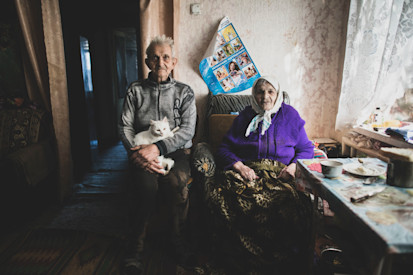
Urgent funding is required to meet the needs of 1.9 million people until the end of 2021
In its eighth year, the humanitarian crisis caused by the on-going conflict in eastern Ukraine remains dire. Millions of people on both sides of the “contact line” face fatal risks, have limited access to essential services and experience shrinking livelihood opportunities daily. Moreover, the COVID-19 pandemic and its socioeconomic ramifications have strained the resilience of conflict-affected communities, increasing their reliance on humanitarian aid to survive.
Of the 3.4 million people identified as in need of humanitarian assistance, some 1.9 million people are planned to be assisted through the highly prioritized Ukraine Humanitarian Response Plan (HRP), which seeks US$168 million during 2021. The needs, however, continue to outpace the funding, with only 28 per cent of the requisite funding received ($47.1 million) as of 1 September 2021. At the current pace of contributions, the Plan is feared to become one of the least funded appeals since the onset of the conflict in 2014.
With this in mind, the Humanitarian Country Team in Ukraine has prepared the Humanitarian Funding Priorities Document, in which it has identified $49 million of priority life-saving humanitarian actions across six main sectors [1] to be funded during the remainder of the year: education, food security and livelihoods, health, protection, shelter and non-food items, water, sanitation and hygiene (WASH).
When defining the most critical needs for the remainder of 2021, three key criteria were applied during the prioritization exercise: (i) all dimensions of time criticality, including seasonality of activities and the projected situation with COVID-19, (ii) focus on the most vulnerable groups, and (iii) probability of immediate implementation once the funding is made available.
Supporting time-critical needs and most vulnerable
The long winter period in Ukraine, which lasts from November to March, is traditionally a lean season when farming is limited, job opportunities are scarce, and people’s incomes deplete. In addition, many conflict-affected people are expected to be forced to cut back on their food and other critical expenses ahead of winter to afford coal or firewood to keep their houses warm. The humanitarian community estimates that it will require $5.4 million, or $180 per person, to provide food assistance to 30,000 food-insecure people on both sides of the “contact line” to help them survive another winter.
Some vulnerable groups, such as pensioners, can barely afford to stock up on coal or other fuel to heat their houses. With the minimum required quantity of coal costing around UAH7,000 ($260), pensioners in eastern Ukraine, who receive some UAH3,000 ($110) per month on average, must make savings from their meagre income over several months to get through winter months. To help these most vulnerable conflict-weary people, humanitarians seek $14.7 million to support 107,000 people living close to the “contact line” and in isolated settlements with heaters, fuel, and other assistance to stay warm during the winter.
Capitalizing on arising opportunities
While the summer brought some respite from COVID-19, with a drop in new COVID-19 cases and lower hospitalization rates across Ukraine, including the conflict-affected areas, the downward trend of new COVID-19 cases has started to reverse. It is now projected that a new wave of infections will likely hit Ukraine in October-November.
Humanitarian actors seek $7.5 million to support the already overstretched health-care systems in the conflict-affected region. The prioritized provision of medicines and essential medical equipment and services and support to 51 primary health-care facilities in both GCA and NGCA will indirectly benefit more than 340,000 people living in the conflict-torn region. Activities to support COVID-19 prevention, containment and treatment – strengthening laboratory capacities and supporting vaccination rollout support – will help mitigate public health risks and slow the virus spread.
Humanitarian access to areas beyond Government control has also improved during summer 2021, bringing new opportunities for humanitarian actors to scale up their operations. The recently improved access will allow resuming provision of protection services to 310,000 people in NGCA, which to date during 2021 had not been possible due to access restrictions. If the required funding comes in, education partners will also be able to provide school equipment and conduct small-scale repairs and rehabilitation of 10 conflict-affected educational facilities in NGCA. This will help ensure that at least 15,000 students can continue their education uninterrupted.
You can view all funding priorities for the remainder of 2021 here.
How to contribute
Funding sought to meet the identified urgent requirements should be channelled through the 2021 HRP projects and partners. Donors interested in supporting are invited to consult with the relevant clusters or consider contributing to the Ukraine Humanitarian Fund (UHF), a flexible multi-donor pooled fund to respond to a changing operational environment and needs.
It is critical for the UN and its humanitarian partners to receive the required funding as early as possible to launch humanitarian interventions in September-October to allow sufficient time to deliver assistance. For aid recipients in isolated settlements close to the “contact line”, physical access may also be complicated in winter.
---
[1] This targeted appeal does not seek to supersede the 2021 HRP, which remains the overall humanitarian framework for Ukraine in 2021.